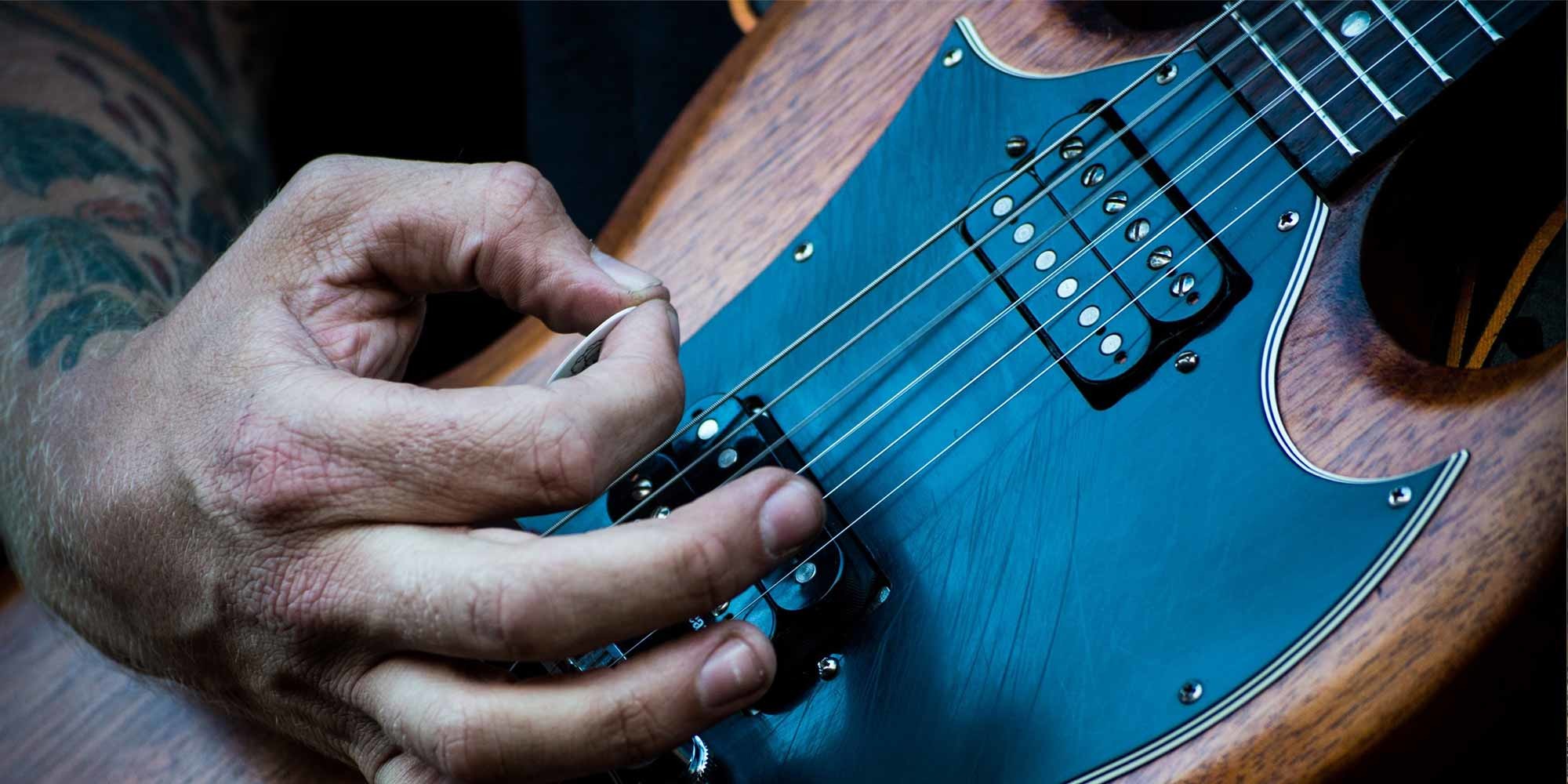How to Double Track Guitars in Your Recordings
In the early days of home recording, track allocation was usually the biggest concern. Even with the best practices, organizational skills and bouncing techniques, the number of available tracks was limited and noise was a problem.
With powerful digital audio workstations (DAWs) available to consumers, the gulf between amateur and professional recordings has narrowed considerably, especially when tricks of the trade are employed in the process. Even simple DAWs, like Apple’s GarageBand, give the consumer more production options and more tracks to play with.
While it’s hard to convey the chaos and magic of a live rock performance in a recording, production techniques can offer an exciting alternate reality. The common practice of doubling guitars is one simple and extremely effective way to do this. It’s a great way to thicken guitars for an entire song, or even just elevate a chorus section.
Doubling and Panning
The most basic way to double guitars is self explanatory: play the part, get a good take, and then do it again. Some players prefer the takes to be as close to identical as possible, others like subtle variations. The former technique will make the guitar sound less doubled; it’ll simply sound richer. The latter can produce a more exciting, dynamic result, though at the expense of exposing to the listener that there is more than one guitar part. It can also be fun for the two guitars to fully “depart” from each other, at times, particularly in a solo section. Sneaking in a complimentary chord or quick harmony for just a bar grabs the listener’s attention.
How these tracks are panned greatly affects the results. Panned closely, the effect is less extreme. Widen the panning to nine o’clock and three o’clock and a different image develops. Fully pan hard left and right, and it becomes even more noticeable. A bonus of hard panned rhythm guitars is that it makes space down the middle for featured tracks, like vocals.
Foolin’ the Brain with the Haas Effect
An underutilized method for adding depth to guitars involves taking advantage of the Haas Effect. In the non-digital world it can be complicated, but in the box, it couldn’t be any simpler. To make guitars or keyboards “wrap around” the listener, first duplicate your guitar track. Pan one track completely to the left and the other completely to the right. Nudge one of the tracks in one millisecond intervals to taste while the tracks are playing and hear it take shape.
The magic usually occurs when the delay is between 10 and 25ms, depending on the tempo of the song and the nature of the part. There is no correct amount of delay; it’s just a matter of personal taste. It’s a simple technique, but the result is striking, especially in headphones.
This psychoacoustic trick relies on the fact that at 40ms, a separate event is perceived by the brain: a slapback starts to develop. Below 40ms, the two tracks arriving at each ear, with one slightly delayed, creates a sensation of openness, or even that the guitars are behind the listener, depending on the amount of delay between the tracks. It will get the guitars out of that crowded center without making them feel panned.
Try it with two guitar tracks, but make sure the source tracks are panned opposite each other. Meaning, if Guitar One is panned hard left, with its Haas track hard right, do the opposite for Guitar Two.
Nashville Stringing and Tuning
Have a spare guitar? Why not try Nashville stringing? Pick up a set of 12-string strings in a gauge you normally use for your six string. String an acoustic or electric with the higher octave set, and set aside the standard strings for later use on your regular guitar. For Nashville tuning, E, A, D and G are tuned an octave higher than normal and the B and high E are tuned normally.
Track your main guitar part, and then double it with your Nashville guitar.
The results are astounding. Don’t let the name fool you; this isn’t just for country music. Try using a Nashville strung acoustic, clean or even distorted, behind your electric guitar. Lower it in the mix or bring it up. There is no right or wrong, so figure out what works best for the song and, as always, experiment with panning.
Tuning, Filtering and Experimenting
It’s a given that any guitar being recorded should be well intonated and tuned before every take, but it’s essential when doubling guitars. It also helps to ease back on the distortion, since that can compound when multiple takes are stacked and create muddiness.
Last of all, remember to employ low pass and high pass filtering. Much of the time there is no need to include information below 70 hz or above 5khz, so eliminating it will clean up your guitar tracks, and thus your mix, nicely.
Try experimenting with different guitars, guitar settings, amp settings, mics, and mic’ing techniques. Use different chord voicings or play the same chords on a capo’ed guitar. Grab abaritone guitar or a 12-string. While there are tried and true classic methods for doubling that have been used for decades, there is no need to be bound to them, so let your imagination run wild.
FONTE: https://reverb.com/news/how-to-double-track-guitars?_aid=fb
Julian Ludwig é diretor do Pro Áudio Clube, produtora de áudio Jacarandá, Loc On Demand e Jacarandá Licensing. Trabalhou para empresas como: Guaraná Antartica, TV Gazeta, NET, Chivas Regal, FNAC, Prefeitura de São Paulo, Mukeca Filmes, Agência LEW’LARA TBWA, Agencia MPM, Agência Content House entre outras. Fez trilhas para programas de TV como: Internet-se (Rede TV), Você Bonita (TV Gazeta), Mix Mulher (TV Gazeta), Os Impedidos (TV Gazeta), Estação Pet (TV Gazeta), CQC (TV Band) Vinheta Oficial TV Gazeta, entre outras. Também atuou em vários longas e curtas metragens, incluindo mixagem em 5.1 e serviços de pós-produção.

